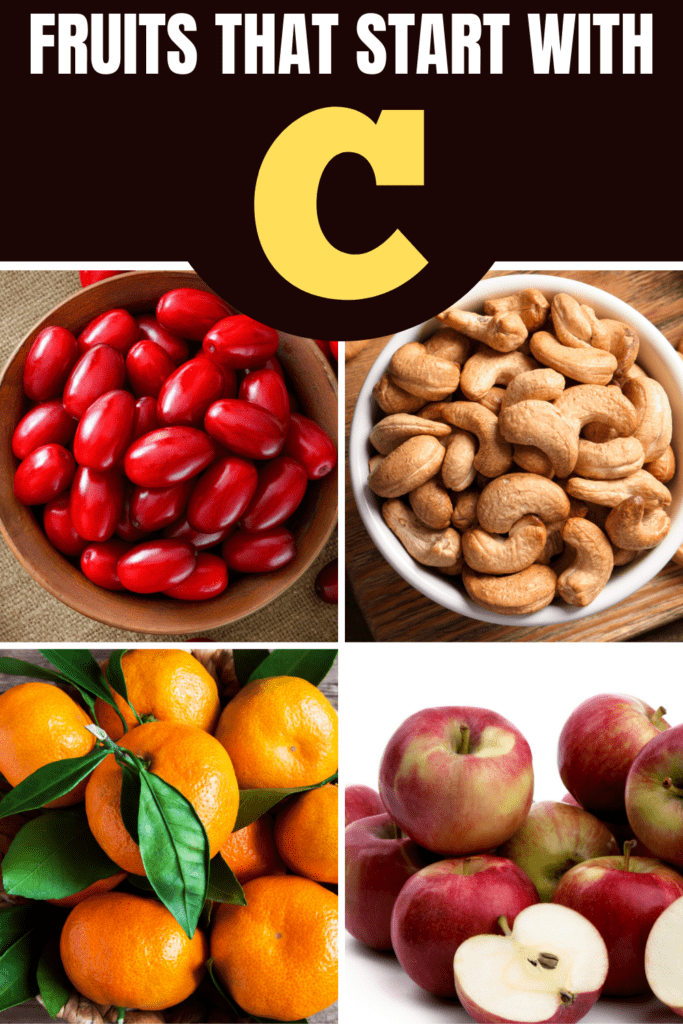From berries to melons, this list of 30 fruits that start with C is a diverse bunch of sweet treats.
No doubt you’ve heard of cantaloupes and cherries, but some picks will surprise you.
Ever heard of a calamansi? What about a caqui or a canistel?
You soon will! These fruits that start with C will shake you out of your fruit rut and get you inspired for your next fruity and flavorful dessert.

1. Cantaloupe
Cantaloupe is also known as a rockmelon, which is a much cooler name for this mildly sweet, orange fruit.
A health-boosting rockstar, just one cup of cantaloupe contains over 100% of your recommended daily intake of vitamin C.
It’s also rich in fiber and very hydrating, making it the perfect choice for sorbets on hot days and simple summer snacks.
And if you’re wondering how to tell if a cantaloupe is ripe, pick one that’s heavy and doesn’t sound hollow when you knock on it.

2. Cherries
Vibrant, juicy cherries are nature’s ultimate candy.
There are dozens of different varieties, so choose wisely – red or black, purple or pink, tart or sweet.
Cherries are a summer fruit, with a short growing season, so catch them quick in July to get them at their best.
One of the most popular varieties, lapins, is only available for a few weeks.
Large, red lamberts last longer – hanging around from June to August.
With all those varieties, it’s tough to decide which to pick. But don’t worry, they all taste great in pie.

3. Canary Melon
It’s hard to miss a canary melon at the grocery store. Why?
Because they’re a glorious, bright, sunshine-yellow color that outshines all other fruit.
Chop it open, and you’ll find mild white or pale green flesh that tastes a bit like a honeydew melon, but with a slight bitterness.
Also known as a Spanish melon, the canary variety is high in both vitamin C and vitamin A, but low in calories.
It’s the ideal snack for sweet-toothed dieters.

4. Crab Apple
As their unappealing name suggests, crab apples are not exactly the most popular type of apple in the family.
These tiny fruits are often overlooked in favor of their flashier cousins, but they have a unique sour taste that can work well in many dishes.
Crab apple jelly, crab apple chutney, even crab apple wine.
Grow your own crab apple tree, and you’ll have plenty of choices when it comes to condiments.

5. Cashew
Cashews are nuts, but they’re also fruits (stay with me).
The cashews we enjoy eating salted, roasted, and by the handful, are actually the seeds of the cashew apple.
Cashews grow on the outside of the apple, in a hard shell. Each apple only produces a single seed.
So that bag of cashews hiding in your cupboards is basically an entire orchard.
6. Chinese Quince
Chinese quince is a pretty pink flowering tree that grows across Eastern Asia.
The fragrant fruit it produces is large and round with yellow skin and white flesh.
There are lots of ways to enjoy Chinese quince. In China, it’s candied for a sweet snack or simmered to a thick syrup.
The fruit can also be blended with ginger for a refreshing and delicious drink.

7. Cavendish Banana
If you had a banana for breakfast, it was probably a Cavendish.
Named after William Cavendish, 6th Duke of Devonshire, this is a banana with serious pedigree.
First cultivated in the 1820s, it’s become the most popular banana export in the world. But the Cavendish is under attack.
Cavendish varieties are particularly susceptible to a nasty blight known as Panama disease.
The race is now on to protect the plant by tweaking the banana’s genetics.

8. Chestnuts
Roasted chestnuts are one of the best things about winter.
The fruit of the chestnut tree, chestnuts are hard, bitter and inedible when raw but soft, nutty, and slightly sweet when cooked.
Roast for 25 minutes, crack them from their shell, add a sprinkling of sea salt, and you’ll have a delicious snack, appetizer, or side.

9. Chinese White Pear
Native to Northern China, the Chinese white pear is a juicy fruit with a unique, aromatic taste.
It’s often described as a mix of rose, pineapple, and honey.
Also known as ya pears, they’re firm to the touch when ripe and crisp like an apple.

10. Cranberries
Tart and sour, cranberries are usually smuggled into dishes rather than eaten solo.
And that’s okay, because these small, red berries are perfect for adding zing to stuffing, pies, juices, and tarts.
They work well to balance out sweeter fruits which is why they’re often paired with apples or sweeter berries like raspberries.
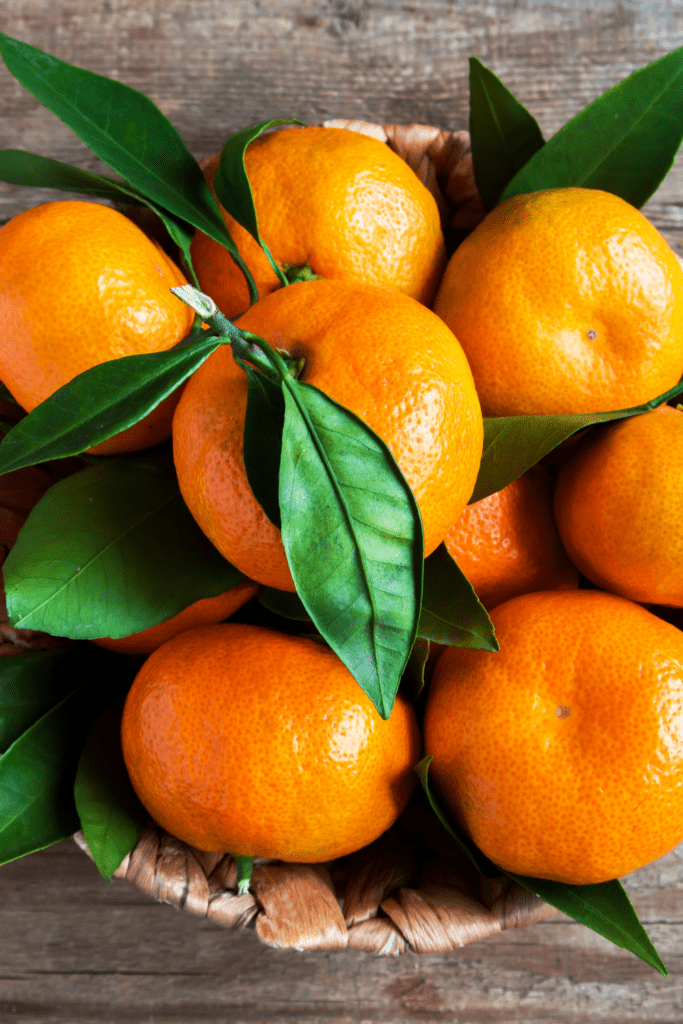
11. Clementine
Clementines are a hybrid between sweet oranges and mandarins.
Like any good offspring, they show off the best of both – being tiny, juicy, and intensely sweet.
This easy-peel fruit is a great addition to your kid’s lunchbox. They’re vitamin C powerhouses and bursting with antioxidants.

12. Courgette
Hands up if you thought courgette was a vegetable. Yep, me too.
But this edible summer squash is a member of the melon family, which explains its very subtle sweet taste.
Baked, fried or even turned into healthy low-carb noodles, the versatile courgette is great when you want to sneak more nutritious ingredients into everyday meals.
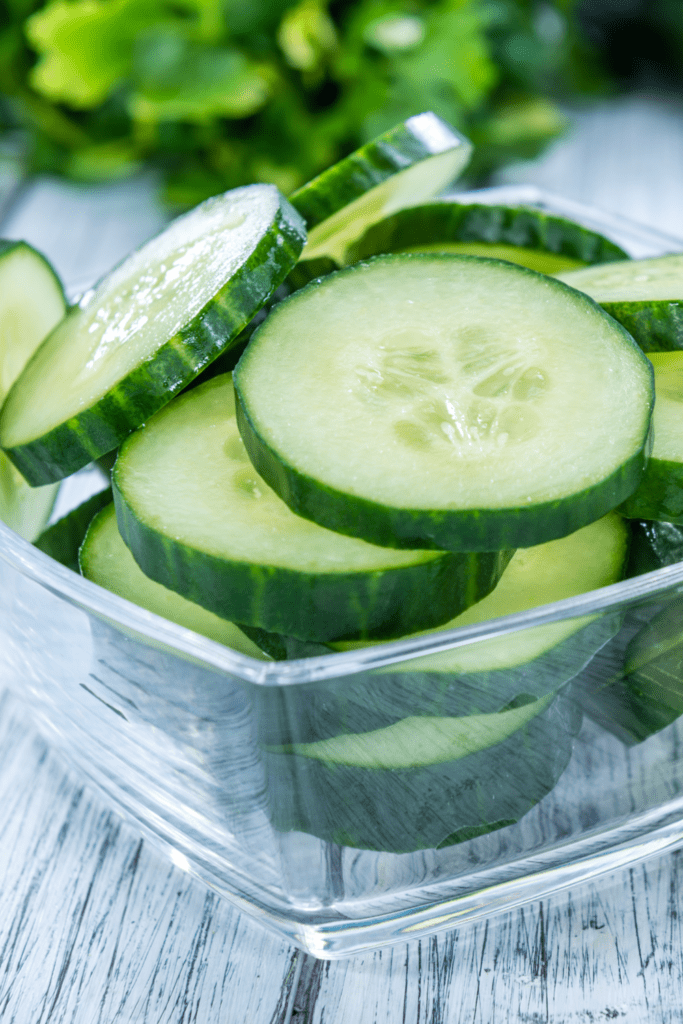
13. Cucumbers
Cucumbers are another squash-like fruit that’s popular in the summer months.
Green on the outside, pale and fleshy inside, they have a fresh, mild taste that’s best combined with sharper flavors.
Chopped and tossed into a bright, zesty, salad, or used to add bulk to spicy salsa, cucumbers are a summer must-have.

14. Calamansi
Cultivated in the Philippines, calamansi is a tropical citrus fruit with hints of both lime and lemon flavors.
Sharp, sour, and tangy, these exotic fruits are perfect for making refreshing lemonade.
They also add a piquant hit to stir-fries, curries, and pasta or sauces.

15. Coconut
Coconuts are one of the most popular food trends in recent years, thanks to their healthy fats and versatility.
They may be catching the attention of the health crowd now, but coconuts have long been a staple of traditional diets in Asia, South America, and the Caribbean.
In those cultures, every part of the fruit is used – frying in coconut oil, stirring coconut milk into creamy curries, or simply pureeing the flesh for a deliciously sweet smoothie.

16. Carob
The carob fruit looks like a dark brown pea and is native to the Mediterranean.
Dark, rich, and slightly nutty, carob powder can replace cocoa powder in recipes to give you more unique-tasting brownies or chocolate cake.

17. Conference Pear
Conference pears are also known as banana pears, thanks to their unusually elongated shape.
They appear late in the year, usually hitting grocery stores around October or November.
Grab a bag when you see them, as these mildly sweet fruits work in almost any dish, sweet or savory.
18. Ceylon Gooseberry
You probably wouldn’t want to eat a ceylon gooseberry right off the tree.
These tiny berries have a bitter skin covered in prickly green hairs. Bite into it, and you’ll be rewarded with an astringent sour taste.
When paired with other fruits and sweetened, ceylon gooseberries are perfectly palatable however and work well in jams, jellies, and sauces.

19. Cortland Apple
The Cortland apple was first cultivated in New York in 1898, making it older than many of the city’s buildings.
A close relation to the McIntosh variety, the Cortland is one of the top 15 favorite apples in the US.
It’s bright red, with darker red streaks, and perfectly ripe in mid to late September.
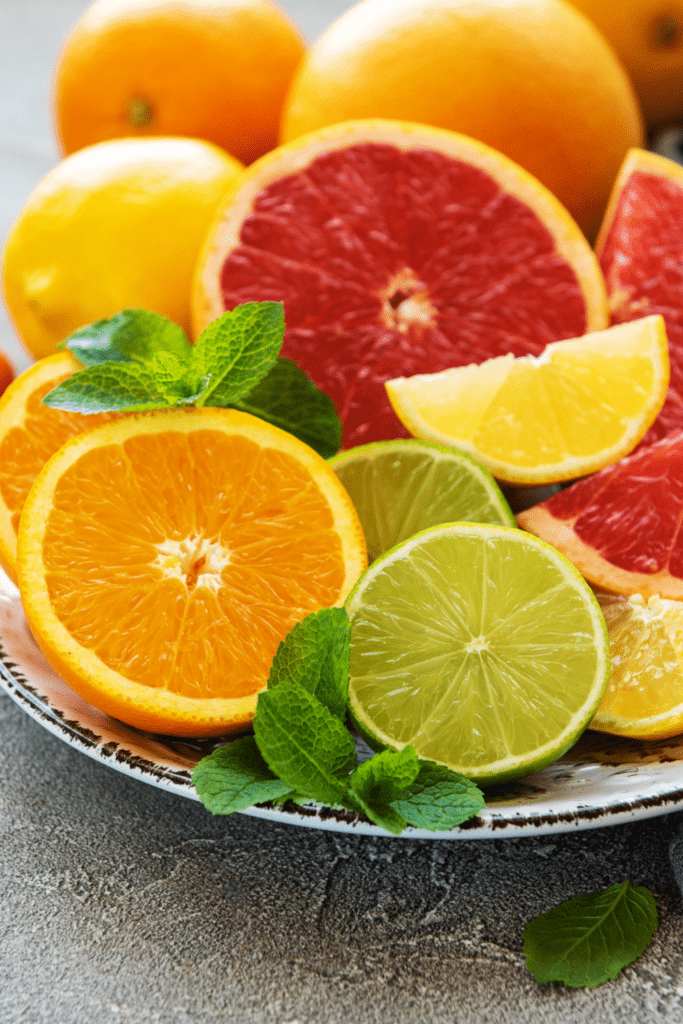
20. Citrus Fruits
The citrus fruits are a large family, known for their sharp, sour taste.
The most well-known are obviously limes, limes and oranges.
But this diverse family tree also includes grapefruits, kumquats, and yuzu.
21. Caqui
A caqui is a persimmon, and a persimmon is a deliciously fragrant fruit that tastes like a mango with a hint of sweet spice.
You’ll have to get them when they’re perfectly ripe though.
An under-ripe persimmon is an experience not easily forgotten – bitter, acrid, and very unpleasant.
Eat them when they’re very soft to get the best flavor.
You can always hurry them along to peak ripeness by putting them in a paper bag with a banana.
The gases emitted by a ripe banana will quicken the process.

22. Ciruela
Ciruela is a Spanish plum, common in South America and the Caribbean.
The yellow flesh is sweet and rich, with a slightly bitter aftertaste.
Rich in both antioxidants and vitamins, this healthy snack can be enjoyed as-is, or made into jams, tarts, or pies.
23. Cluster Fig
Native to Australia and Asia, cluster figs look a lot like grapes, taking their name from their segmented appearance.
Red, fuzzy, and growing straight out of the tree, they’re quite a sight.
If you ever happen to be foraging in India, pick and enjoy straight from the tree.
They’re delicious eaten raw, but equally good processed into sweet syrup or swirled into baked goodies.
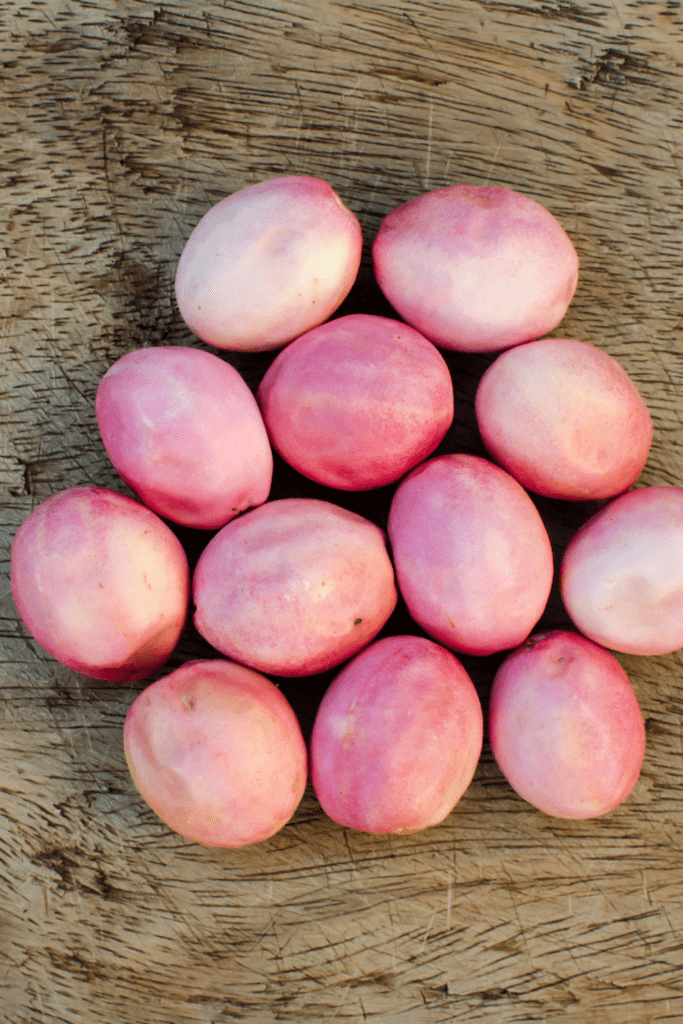
24. Cocoplum
Cocoplums are very common in the Caribbean and other tropical regions.
In fact, they grow so well in balmy climates that they’re considered an invasive species in some areas.
The fruit can be used in many delightfully different ways.
If you’re heading south for your next vacation, look out for cocoplum ice-cream, cocoplum tart, and even cocoplum cocktails.

25. Cornelian Cherry
These dark red cherries can be quite bitter, making them the kind of cherry that’s used as an ingredient in jams and sauces rather than eaten raw.
Similar to cranberries and other sour berries, these cherries work best with sweet flavors.
Try them with strawberries and apples, or something savory like cheese and nuts.

26. Currants
Currants, or raisins, are dried grapes.
Intensely sweet and satisfyingly chewy, they’re great eaten on their own for a quick energy-filled snack but also enjoyed as a way to sweeten baked goods.
They’re often used in fruit scones, puddings, and bread.
Currants are a traditional staple in fall and winter baking when fresh fruit isn’t readily available but hungry cooks still want something sweet.
27. Cacao
The cacao plant has a special place in my heart, because it’s the tree that gives us chocolate.
This superfood tree produces seeds (cocoa beans i.e chocolate) and the cacao fruit.
Both cacao and cocoa are nutritional heavyweights, rich in powerful antioxidants, magnesium, iron, and calcium.

28. Canistel
The canistel’s round, yellow fruit is also known as egg-fruit. How’s that for appetizing?
Thankfully, the name comes from its color (bright yellow, like a yolk), rather than the taste, which is sweet and sugary.
With its creamy, dense texture, the overall effect is like biting into an egg custard.

29. Caper Berries
Caper berries are not your usual sweet fruit.
Tart and tangy, these tiny green morsels taste more like salty olives than berries.
That makes them perfect for pickles, relish, or just tossed straight into a salad.

30. Carambola
Also known as star fruit, carambola are a yellow ridged fruit that look like tiny stars when sliced crossways.
They’re a tropical plant with a fresh, light taste.
Extremely juicy, star fruit melt in the mouth with a mildly sweet flavor much like pears or grapes.
